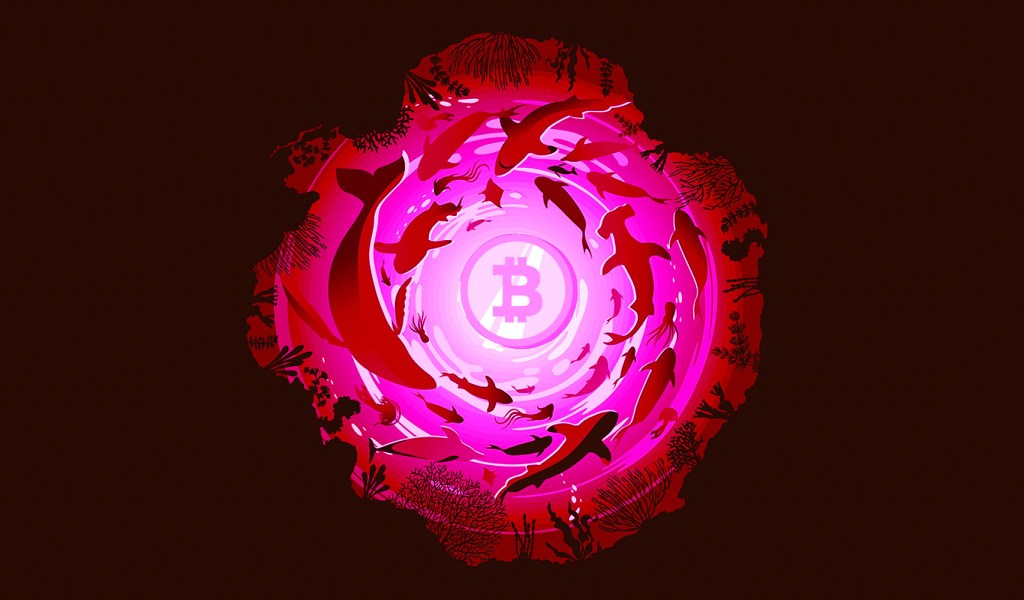
A widely followed crypto strategist is bullish on two popular altcoins amid relatively calm price action for the markets. Starting with Binance Coin (BNB), the pseudonymous analyst Kaleo tells his 593,300 Twitters followers that the native token of the Binance Smart Chain is a bargain at a price of below $250. According to Kaleo’s charts, […]
The post Crypto Strategist Says Binance Coin (BNB) and Bitcoin Cash (BCH) Flashing Bullish Signals – Here Are His Targets appeared first on The Daily Hodl.

Blockchain analytics platform Santiment says that deep-pocketed investors are scooping up a massive amount of one crypto asset as Bitcoin’s (BTC) price hovers. Santiment says that crypto sharks and whales are keeping a close eye on Bitcoin’s price action in the range of $30,000 as they accumulate a big supply of stablecoins, including Pax Dollar […]
The post Whales Aggressively Accumulating One Crypto Asset Class As Bitcoin Ranges, Says Santiment – Here’s What It Means appeared first on The Daily Hodl.

A closely followed crypto strategist is predicting a quick burst to the upside for Binance Coin (BNB), likely driven by bears who are betting that the utility token will see sustained downside price action. Pseudonymous analyst Jack tells his 243,100 Twitter followers that BNB is likely due for a bounce as it trades close to […]
The post Crypto Analyst Predicts Short Squeeze for Binance Coin (BNB) – But There’s a Big Catch appeared first on The Daily Hodl.

A widely followed crypto trader is predicting surges for a handful of altcoins including memecoins Dogecoin (DOGE) and Pepe (PEPE). Pseudonymous analyst Kaleo tells his 593,000 Twitter followers that DOGE looks poised for bullish continuation after taking out its diagonal resistance on the four-hour chart. According to Kaleo, DOGE could witness breakout rallies if it […]
The post Crypto Analyst Predicts Rallies for Dogecoin, Pepe, Polygon and Two Additional Altcoins – Here Are His Targets appeared first on The Daily Hodl.

The market cap of one privacy-focused blockchain project is exploding in value, according to crypto analytics firm Santiment. Santiment says that the market cap for altcoin Verge (XVG) more than tripled in just two days as bullish sentiment soared. “The market cap of Verge has more than tripled (+209%) in just 48 hours, and it’s […]
The post Privacy Coin Explodes Over 300% As Bullish Sentiment Brews in Altcoin Markets: Santiment appeared first on The Daily Hodl.

A widely followed crypto trader is issuing a warning to market participants that he expects massive drops ahead for digital assets. In a lengthy message, pseudonymous trader and crypto bear Capo tells his 766,600 Twitter followers that he envisions Bitcoin (BTC) to drop toward the $12,000 level and for Ethereum (ETH) to dip to somewhere […]
The post Crypto Bear Calls for Massive Drops in Bitcoin (BTC) and Ethereum (ETH) Plus Altcoin Capitulation appeared first on The Daily Hodl.

Bitcoin dominance is rising, but so is Ethereum’s share of market dominance among its altcoin competitors. Cointelegraph explains why.
Ethereum has been the dominant smart contract and decentralized application (Dapp) network since its inception. An analysis based on Ether’s price (ETH), and its market capitalization, shows indisputable evidence that the blockchain has been gaining market share over time.

As shown above, Ether’s dominance in market capitalization terms grew over the past couple of years, from an 18% average in July 2021 to the current 20%. Excluding Bitcoin (BTC) from the analysis, Ether’s market share presently stands at 40.6%, while the next competitor, BNB, holds a 7.2% share.
This shows the disparity from the leading Dapp-focused network to the incumbents, which is also evident when analyzing the total value locked (TVL) on each network’s smart contracts. Ethereum is the absolute leader with $24.6 billion in TVL, followed by Tron’s $5.4 billion and BNB Chain’s $3.3 billion.

The above chart depicts the Ethereum network’s TVL market share declining from 70.5% in June 2021 to 49.5% in May 2022. The movement happened while Terra and Avalanche gained a combined 20% market share in smart contract deposits. However, after the Terra-Luna ecosystem collapse in May 2022, which culminated with developers halting network activity, Ethereum quickly regained a 58% market share.
Despite the emergence of Dapps on the BNB and Tron blockchains, Ethereum’s leadership has remained unquestioned over the past 12 months. This data shows the irrelevance of the total number of unique active wallets interacting with smart contracts (UAW) per chain.
For instance, according to DappRadar, WAX has 363,600 active users, followed by BNB Chain's 517,300 30-day UAW. These figures are way higher than the Ethereum network’s 66,300 unique active addresses, but they reflect a much lower transaction fee, opening room for manipulation.
Ethereum is the ecosystem with the highest number of active developers, surpassing 1,870, which is more than the next three competitors combined: Polkadot (752), Cosmos (511), and Solana (383).
Currently, the Ethereum network has over 700,000 validators, with 99% of the balances locked in staking participating in the process. The 32 ETH threshold limit per validator undoubtedly inflates this number, but Lido, the largest known staking pool, controls 32% of the staking, with Coinbase coming in second with 9.6%.
Consequently, it is safe to say that Ethereum is far less centralized in terms of development and validation in comparison to Tron, BNB Chain and Solana.
Other reasons why Ether’s dominance has been on the rise, even as Bitcoin reached a 50% market share on June 19 are: derivatives activity and Ethereum’s dominance of the NFT market
Ether’s future contracts are essential for institutional trading practices like hedging and trading with leverage. Ether’s cash-settled futures were added to the Chicago Mercantile Exchange in February 2021. To date, no other cryptocurrency, apart from Bitcoin, has ever reached the world’s largest derivatives exchange.
In futures markets, longs and shorts are balanced at all times, but having a larger number of active contracts — open interest — allows the participation of institutional investors who require a minimum market size. Ether futures aggregated open interest stands at $5.4 billion, while competitors BNB hold $380 million and Solana a mere $178 million.
Nonfungible tokens (NFT) are a perfect example of how cheaper and faster transactions do not always translate to increased adoption. There’s nothing stopping NFT projects from shifting between blockchains, whether for new listings or existing collections. In fact, y00ts and DeGods moved to Polygon earlier in 2023.
Despite facing gas fees that oftentimes break above $10, Ethereum remains the absolute leader in the number of buyers and total sales. According to CryptoSlam!, the leading network reached $380 million in sales in the past 30 days, while Solana, Polygon and BNB Chain totaled a combined $93 million.
Ultimately, the data favors Ethereum versus the competing smart contract-focused blockchains. The positive trend in Ether’s dominance might fade over time if the promised upgrade to allow parallel processing (sharding) does not come to fruition, but for now, Ether’s 20% market capitalization share remains unchallenged.
This article is for general information purposes and is not intended to be and should not be taken as legal or investment advice. The views, thoughts, and opinions expressed here are the author’s alone and do not necessarily reflect or represent the views and opinions of Cointelegraph.
This article does not contain investment advice or recommendations. Every investment and trading move involves risk, and readers should conduct their own research when making a decision.

New developments such as free usernames, cross-chain names, and chat functions may lead to more addresses being associated with a name.
Ever since the Ethereum Name Service (ENS) was launched in 2017, Web3 users have been able to replace the long strings of characters that make up a crypto address with a more easily memorized blockchain username or Web3 domain name. For example, Ethereum (ETH) users can now send crypto to the network’s founder, Vitalik Buterin, at his username of vitalik.eth without knowing that his address is 0xd8da6bf26964af9d7eed9e03e53415d37aa96045.
But despite this advancement making it much easier to identify users, hardly anyone has taken advantage of it. There are over 200 million unique addresses on Ethereum, yet only 2.2 million .eth names were registered as of January. This means that at least 97% of Ethereum addresses are not associated with an ENS username.
This lack of usernames creates user experience problems in the Web3 ecosystem. Just imagine if early email addresses had consisted of long strings of characters that looked like 0x7a16ff8270133f063aab6c9977183d9e72835428 or 0x3A7937851d67Ee2f51C959663749093Dc87D9C9a. If this had been the case, Email may not have survived as a practice.
But despite this initial lack of adoption, there is some evidence that the tide may be turning in favor of Web3 usernames. A few recent advancements in wallet and messaging apps may onboard more users than ever before.
One of these advancements is better wallet integration with free usernames.
Wallets have had the ability to understand Web3 names for a long time. According to Metamask’s changelog, it introduced the ability to send to a .eth name in October, 2017, right after ENS launched. Other wallets have followed suit with this feature, including Coinbase wallet, Trustwallet, and others. Some of these wallets have also integrated with ENS rivals Unstoppable Domains, Space ID, Bonfida and others.
However, these wallets still show a crypto address to users by default, as new users don’t typically receive names automatically.
In order for a user to receive crypto via their Web3 name, they need to first register a username with a particular name provider. This means figuring out which provider to use, navigating to the providers interface, and going through the process of registering.
To make matters worse, names can be expensive. ENS names typically cost $5 and expire after a year, while Unstoppable Domains names that do not need to be renewed typically cost from $20-$40. Compare this with how easy it is to sign up for an email address for free using Gmail, Outlook, Yahoo. etc., and it’s easy to see why most crypto users don’t have a Web3 username.
A few wallet apps have been trying to solve this problem by giving away free domain names to their users. For example, Coinbase wallet allows new users to register a single .cb.id username for free, once per year, and Kresus wallet offers its users a free .kresus username of up to 8 characters as well.
This practice of giving out free usernames has begun only recently. And some popular wallets like Trustwallet and Metamask still don’t offer the feature. But as more users onboard to the Web3 ecosystem, this may lead to greater adoption of Web3 usernames over time.
Another recent advancement is instant messaging integration.
Some messaging apps have begun to implement Web3 names as usernames, increasing these names’ utility beyond the payments use-case. One example is Blockscan Chat. It allows users to send instant messages to any Ethereum address or ENS username.

Caption: Blockscan Chat interface. Source: Blockscan
When messages are sent using Blockscan chat, they produce alerts on the Etherscan block explorer. If the recipient sees the alert and logs into the app, they are able to read the message. The developer of the app claims that all of its messages are end-to-encrypted. So although anyone can see if a particular user has received a message, only the sender and recipient can read it.
Web3 usernames aren’t an absolute necessity for using Blockscan chat, as it does allow users to send messages to crypto addresses as well. But names do make it much easier for users to find each other in the app.

Another example is Grill.chat, a messaging app running on the Subsocial (SUB) network. When a user first signs up for it, they are assigned a random username. But they can optionally attach an Ethereum wallet to their account. If they do this, the app automatically converts their random username into their .eth username.
Being able to find other users to chat with via their web3 usernames is arguably a more useful feature than being able to send crypto with them.
After all, the crypto community is still small. If a crypto user needs money from friends or family, they may be better off right now using traditional Web2 apps like Venmo or Apple Pay, as their friends and family may not know how to use a Web3 wallet. But if a person wants to chat specifically about crypto and Web3 apps, being able to look them up by their username could turn out to be a huge advantage. This added use-case may entice more users to adopt Web3 names in the future.
Another recent advancement in Web3 names is cross-chain names.
When Web3 names were first invented, ENS was the only protocol that could be used to create them, and it could only be used on Ethereum.
But the Web3 ecosystem has since grown to encompass many different chains. And as the number of chains has grown, so has the number of naming protocols. Users can now register Polygon (MATIC) usernames from Unstoppable Domains, Solana (SOL) ones from Bonfida, and both Arbitrum One (ARB) and BNB Chain (BNB) names from Space ID.
This fragmentation across chains can make integration difficult for wallets and block explorers and cause confusion for users. For example, suppose that a person’s Polygon username is newton.crypto. But when they go to register the same name on BNB Chain, they find that newton.bnb is already taken, so they register einstein.bnb instead. When a user looks at this person’s address on a block explorer, either name could appear, depending on which one the developer of the block explorer has chosen to display. And regardless of which one is displayed, it could cause confusion for users.
In this case for example, if a user wants to send crypto to newton.crypto via BNB Chain, they may easily send it to newton.bnb instead, which will turn out to be the wrong recipient.
A few Web3 companies are trying to fix this problem by creating a single name for each identity across multiple chains. For example, the Redefined app allows users to register for a username on Arbitrum One, but use it to receive funds on 8 other chains: Polygon, Optimism (OP), BNB Chain, Solana, Bitcoin (BTC), Fantom (FTM), Moonbeam (GLMR) and Near.
To make this feature possible, Redefined lets the user write an address or username for each network into the Arbitrum smart contract through a “manage” tab within the app. Once the addresses are listed in the contract, any person can initiate a transaction to the correct address using a “send” function within the app. In order to send funds, the sender only needs to know the recipient’s Redefined username, not the recipient’s name or address on any particular chain.
Redefined usernames begin with an @ and do not have extensions. For example, @newton and @einstein are possible redefined usernames.
Did.id, also called “.bit,” is a similar project that runs on the Nervos network. It allows users to register for a .bit username that works across 39 different networks, including Bitcoin, Ethereum, Polygon, Solana, Bitcoin Cash (BCH), Internet Computer (ICP), and many others. Registration can be done directly with a Nervos network wallet or indirectly using Polygon.
Did.id doesn’t feature a user interface with a “send” function. However, it is integrated with nine different wallet apps, including imToken, Tokenpocket, MathWallet, Huobi Wallet, Bitkeep, HyperPay, AlphaWallet, ViaWallet, and MIBAO. So it’s available to senders who use these wallets.
Cross-chain usernames are yet another new development that may spur greater adoption of Web3 usernames over time.
Despite these advancements, it’s still not clear how long mass adoption of Web3 usernames will take. Right now, over 90% of Web3 addresses are not associated with any username. So there is a huge hill to climb in terms of adoption. And in the meantime, users still need to cut and paste a complicated string of characters to find a person’s Web3 identity.
There is also still plenty of friction left for users, including the continuing high cost of registering a name for users of most wallet apps.
Even so, these advancements may pave the way for the mass adoption of Web3 usernames at some point in the future.

A widely followed trader who has remained bearish on crypto markets this year despite the bounce is getting more confident on his calls for lower prices for several altcoins. The pseudonymous trader known as Capo tells his Telegram followers that when Bitcoin (BTC) breached the $25,000 level to the downside last week, it was the […]
The post Crypto Bear Reveals Price Targets for Ethereum (ETH) and Polygon (MATIC), Updates Outlook on Binance Coin (BNB) appeared first on The Daily Hodl.

Regulatory uncertainty and the lack of transparency on stablecoins caused crypto markets to trade at its lowest levels in 3 months.
The cryptocurrency total market capitalization fell to $1.02 trillion on June 15, its lowest level in three months. But while the derivatives market's resilience and end-of-week price gains amid uncertainty in stablecoins' reserves provides hope for bulls, it might be too soon to celebrate.
The past few week have seen a bearish trend fueled by regulatory uncertainty. Last week, Bitcoin (BTC) and BNB saw 2.5% gains, but XRP dropped 5.2%, and Ether (ETH) traded down 0.7%.

Notice that the 10-week long pattern has tested the support level in multiple instances, signaling that bulls will have a hard time breaking from the bearish trend while regulatory conditions have worsened across the globe.
For starters, New York-based derivatives exchange Bakkt is delisting Solana (SOL), Polygon (MATIC) and Cardano (ADA) due to recent regulatory developments in the United States. The decision follows last week's lawsuits brought by the Securities and Exchange Commission (SEC) against crypto exchanges Binance and Coinbase.
Related: Why is the crypto market up today?
More recently, on June 16, Binance has been the subject of a preliminary investigation in France since February 2022. The France-based arm of the crypto exchange reportedly failed to obtain an operating license and illegally offered its services to French customers. Furthermore, the exchange lacked Know-Your-Customer procedures, according to regulators.
Also on June 16, Binance announced its departure from the Netherlands, with users being asked to withdraw their funds as soon as possible. The decision to exit the Dutch market occurred after the exchange failed to obtain a virtual asset service provider (VASP) license.
Despite the worsening crypto regulatory environment, two derivatives metrics indicate that bulls are not yet throwing in the towel. Nevertheless, they'll likely have a hard time breaking the bearish price formation to the upside.
Perpetual contracts, also known as inverse swaps, have an embedded rate that is usually charged every eight hours.
A positive funding rate indicates that longs (buyers) demand more leverage. Still, the opposite situation occurs when shorts (sellers) require additional leverage, causing the funding rate to turn negative.

The seven-day funding rate for BTC and ETH is neutral, indicating balanced demand from leveraged longs (buyers) and shorts (sellers) using perpetual futures contracts.
BNB was the only exception, with traders paying up to 1% per week for short bets, which can be explained by the added risks after regulatory scrutiny over the Binance exchange.
The Tether (USDT) premium is a good gauge of China-based crypto retail trader demand. It measures the difference between China-based peer-to-peer trades and the United States dollar.
Excessive buying demand tends to pressure the indicator above fair value at 100%, and during bearish markets, Tether’s market offer is flooded, causing a 2% or higher discount.

The Tether premium in Asian markets fell to 99.2% after being flat since June 6, indicating moderate discomfort. Reports on June 16 on Tether reserves' exposure to Chinese debt markets could have been the cause.
Derivatives metrics displayed resilience considering the strong regulatory activity aimed at crypto exchanges. Consequently, bears are yet to prove their strength if they intend to push crypto below the $1 trillion mark.
Related: 3 key Ether price metrics point to growing resistance at the $1,750 level
Despite the most recent bounce from the support level, any gains above $1.12 trillion in capitalization (up 10% from the $1.02 trillion low) will likely be short-lived over the next few months.
Therefore, with the Bitcoin halving still over 300 days away, the bulls are currently pinning their hopes on a Bitcoin ETF approval and/or a Federal Reserve rate cut as potential bull market catalysts.
This article does not contain investment advice or recommendations. Every investment and trading move involves risk, and readers should conduct their own research when making a decision.
This article is for general information purposes and is not intended to be and should not be taken as legal or investment advice. The views, thoughts, and opinions expressed here are the author’s alone and do not necessarily reflect or represent the views and opinions of Cointelegraph.